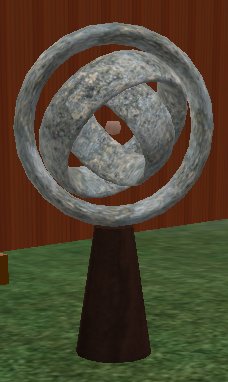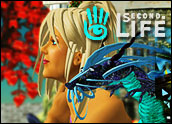
Part 1 of this three-part series on intellectual property law in virtual worlds discusses trademark rights as applied to virtual goods. Part 2 addresses patent rights, including how patent rights can be obtained based on actions performed in virtual worlds, and whether patent rights are enforceable against virtual infringers. Part 3 delves into copyrights: how they can be obtained based on actions performed in virtual worlds, and how to protect your rights when your copyrights are infringed in virtual environments.
Copyrights are perhaps the most common type of intellectual property (along with trademarks), and are the first stop when it comes to protecting software-based products. This is because copyrights, which protect a particular expression of an idea, exist automatically upon fixation of an author’s work in a tangible medium of expression.
This means that a graphic designer’s works are protected the instant they are drawn on paper or saved on a computer. A software programmer’s works are protected the instant they are saved to disc. As a prim sculptor, clothing designer, builder, artist or architect in a virtual world such as Second Life, your house, sculpture, clothing, or other prim- or graphic-based work is protected the instant the virtual world servers save your work so that you or others can subsequently see it.
Exception to the Rule: Works for Hire
As you might imagine, this results in millions and millions of copyrights, because each is legally recognized the instant a new work is first saved for posterity. For example, in the virtual world of Second Life, artist Zarek Lock creates “kinetic sculpture” out of “prims,” which are the basic building blocks for all structures and items in Second Life. (“Zarek Lock” is the name of an avatar, not the actual individual whose account is represented by the avatar.)
Zarek Lock, using the building, scripting and animation capabilities of prims, creates aesthetically pleasing moving sculptures and sells copies to others for use in Second Life. Zarek Lock undoubtedly has a copyright for each different version of his sculptures — not to be confused with multiple copies of the same sculpture — as graphical, audiovisual and/or sculptural works. (A copyright exists independently of the works in which that copyright is embodied. For example, a copyright in a literary work would provide protection against others selling physical copies of the book, or downloading text files of the work over the Internet. Both the book and the text file would be different embodiments of the same literary work.)
Many virtual worlds and video games also provide the ability for users to create scripts that cause certain actions to be performed automatically, or provide interactive abilities to objects in the virtual world. These scripts, just like other computer programs, are protected by copyright as literary works. Other works might even combine multiple creative aspects.
 For example, some of Zarek Lock’s sculptures are embedded with a script causing them to rotate, such as in the image illustrated here where each ring revolves around a different axis. One need not spend much time in Second Life before noticing the abundance of user-created content, but who owns all that content? The users? Linden Lab? Someone else?
For example, some of Zarek Lock’s sculptures are embedded with a script causing them to rotate, such as in the image illustrated here where each ring revolves around a different axis. One need not spend much time in Second Life before noticing the abundance of user-created content, but who owns all that content? The users? Linden Lab? Someone else?
Ownership of a copyright originally vests in the author of the work, with one exception — when the work is considered a work made for hire. If you create a work, you are the author, and you own that work unless you created it within the ordinary scope of your employment for another, or if you created the work based on a written contract that specifically identifies the work as a work made for hire and the work falls within a category eligible to be considered a work made for hire.
If the work is considered a work made for hire, then the employer or contracting party is considered the original author of the work — otherwise the owner is the author, i.e., you. If you created the work in concert with another, where you each intended your contributions to be merged together, then you are joint authors of the work, and you must account to each other for any money you make by virtue of that copyrighted work, e.g., by licensing of the work to others.
TOSes and EULAs: Check the Fine Print
Some virtual worlds or online games include restrictive language in their end-user license agreements (EULAs) that require users to assign all copyrighted material they create in that world or game to the service provider. This typically occurs because the service provider is trying to avoid liability for copyright infringement when that work is reproduced on other users’ computers.
Other virtual worlds allow users to retain ownership of any copyrightable content they create. For example, Linden Lab allows residents of Second Life to retain ownership of any copyrighted works they create. So if you are creating content for an online game, virtual world or other service provider, always check the terms of service and/or EULA to confirm what rights you retain to the content you submit, or you might find that you just made an unintended donation.
Once you confirm that you own the copyright to your own work, what can you do with it? A copyright provides its owner the right to prevent others from making copies of the copyrighted work, distributing the copyrighted work, and from creating derivative works based on the copyrighted work, as well as the exclusive rights to make public performances and displays of the copyrighted work. These rights might be limited by the terms of service or EULA for a service provider, e.g., Linden Lab requires you to agree to an expansive license allowing it to distribute your work on its service:
“Notwithstanding [your retention of copyright rights], you understand and agree that by submitting your Content to any area of the service, you automatically grant (and you represent and warrant that you have the right to grant) to Linden Lab: (a) a royalty-free, worldwide, fully paid-up, perpetual, irrevocable, non-exclusive right and license to (i) use, reproduce and distribute your Content within the Service as permitted by you through your interactions on the Service. …”
However, in accordance with its allowing users to retain copyright rights, the above license does not give other users of Second Life the right to use your copyrights without your authorization, and you could decide to enforce your rights against other users if any of them begin infringing on your rights. Multiple lawsuits of this type have already been filed; however, the amount of monetary damages might be so low that the cost of litigation is often more than the copyright owner could reasonably stand to recover.
Enforcing Your Copyright
A copyright owner can still obtain other types of remedies that might make litigation a worthwhile endeavor to protect his or her rights, including obtaining an injunction against the infringer, statutory damages of up to US$150,000 per infringed work, and recovery of attorneys fees and costs. Keep in mind that statutory damages and attorneys fees are only available if the copyright is timely registered in the United States Copyright Office within three months of first publication of your work (or before the infringing activity otherwise begins).
The above information is just a brief introduction to copyright issues in the context of virtual worlds and computer games. Some key points to remember are that a copyright protects actual expression, not the underlying idea. So if someone copies your idea (e.g., you created a gingerbread house in Second Life) to create a wholly different expression (a different gingerbread house), then its typically not copyright infringement unless the individual copied your specific gingerbread house.
Also, copyrights don’t protect functional features or indications of a product’s source; copyrights only protect creative expression. Patents are the form of intellectual property that should be used to protect ideas; and trademarks should be used to protect the goodwill associated with the source of goods or services.
However, copyrights are the easiest form of intellectual property to get — federal protection starts automatically — and the most inexpensive to formally register (no more than $45 as of the time of publication of this article). By using a combination of patent, copyright and trademark laws, you can effectively protect almost anything you create in a virtual world or video game.
Ross Dannenberg is a principal shareholder in the Washington, D.C., office of Banner & Witcoff, a law firm dedicated to the protection and enforcement of intellectual property rights. Dannenberg is also the editor-in-chief of the Patent Arcade blog, and is an adjunct professor at George Mason Law School in Arlington, Va. The information in this article does not constitute legal advice, and is intended for informational purposes only. No attorney-client privilege exists or is otherwise created with anyone by virtue of this article. Each situation is different. Always contact an attorney to discuss the specifics of your case.
The Rocky Legal Landscape of Virtual Worlds, Part 1: Trademarks
The Rocky Legal Landscape of Virtual Worlds, Part 2: Patents











































